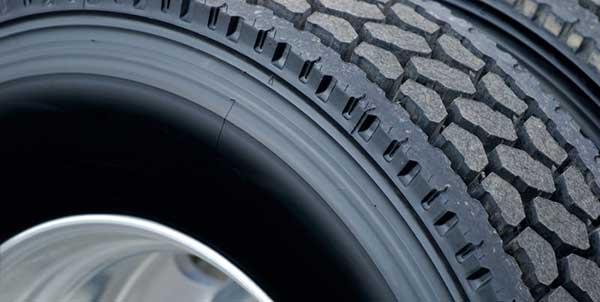Tires continue to be the second highest maintenance cost for fleets, just behind fuel. Yet the initial buying price of the tire is usually not the reason a fleet will spec a specific tire make/model—unless the purchasing department, not the maintenance director, is the final decision maker. Cost per mile over the lifetime of the tire casing should be the ultimate factor in the decision.
Commercial tires are designed to be retreaded multiple times. In a pure line haul operation, steer tires may reach up to 200,000 miles. It then is usually retreaded with a drive tire tread design. Running as a drive tire can generate another 200,000 to 300,000 miles. Using our line haul example, assuming the casing passes inspection during the retread process, the casing can now be retreaded as a trailer tire and may reach another 100,000 to 150,000 miles prior to removal. In reality, 750,000 miles generated on a linehaul tire casing is not unusual.
This greatly impacts cost/mile. For example, Tire A may have a higher initial purchase price compared to Tire B, but if Tire A can be retreaded a second time versus Tire B, which can only be retreaded once, then the final cost/mile will be significantly beneficial for the fleet spec’ing Tire A, despite its higher initial price.
Tire treadwear measured in miles per 32 in. of tread rubber will also impact the total tire cost/mile. It is important for fleets to evaluate the various tire models to determine which tires give the highest treadwear in their specific fleet operation. Some tire makes/models may be more susceptible to developing irregular wear. Tires that develop irregular wear will be removed prematurely and negatively impact cost/mile. When tires have irregular wear such as cupping and scalloping, fuel economy will also be reduced dramatically. If tires are not being worn smoothly and evenly and the tires are bouncing down the highway, fuel economy is adversely affected.
However, specifying deeper tread depth tires is not always the best solution for maximizing treadwear and removal miles. Deep lug drive tires may “squirm” as they are running down the highway, which may lead to irregular wear and early removals.
The goal is to protect the tire casing from cuts, snags and punctures. Running tires down to the legal limit of 4/32-in. for steer tires and 2/32-in. for all the other wheel positions will help in maximizing removal miles but it will hurt on protecting the tire casing from damage. Removing steer and drive tires in the 6/32 to 8/32-in. range will certainly go a long way in protecting the tire casing and maximizing retreadability.
Fleets in regional and line haul service vocation prefer to specify low rolling resistance tires (LRR) tires, which can make a big impact on improving fuel economy. In many cases, LRR drive tires may have a lower initial tread depth. These lower tread depth tires are great for improved fuel economy because less heat is being generated; however, tire removal miles will be lower.
Typically, improving fuel economy even 1% or 2% by specifying LRR tires will outweigh the loss in tire removal miles because of the lower initial tread depth.
Low rolling resistance tires have a higher initial buying price versus standard tires. It makes no sense for a fleet to purchase LRR tires if they do not keep them inflated to the recommended tire air pressure. Running LRR inside dual tires 20% or 30% lower than the outside duals will quickly lead to irregular wear, generate excessive heat and result in a significant loss in fuel economy—clearly not what the fleet was expecting. Tires running 10% underinflated will result in a loss of over 1% in fuel economy; 20% underinflated will drop the fuel economy about 2.5%.
Fleets, of course, expect not only excellent fuel economy, but also high removal miles, and good retreadability from their tires, but require a local tire professional to help them make good business decisions about their tire program. The local tire professional works with many fleets and can provide recommended practices to help the fleet manager make good business decisions about their tire program.
A few questions to ask are: How often should I be visually inspecting tires? What is the best pressure for my steer, drive and trailer tires? What is required to run a tire fuel economy evaluation? Providing information on these typical questions can go a long way in optimizing your fleet tire program.














